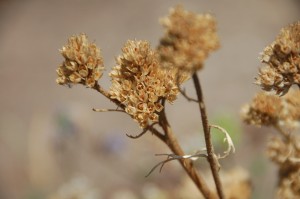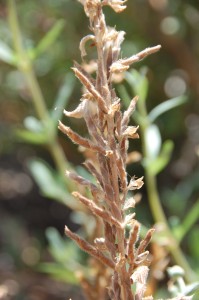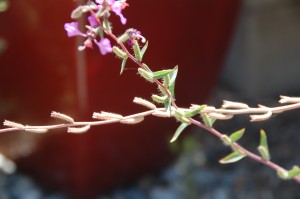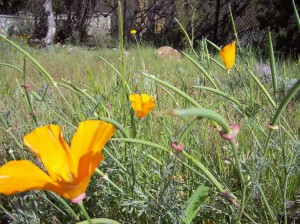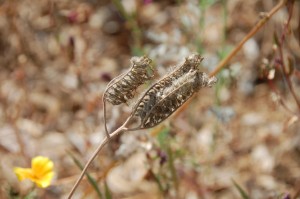Late June brings an official shift of season, as the sun is at its highest point of the year on the Summer Solstice. Many of your meadows may still be dotted with a few bright orange poppies, blazing pink farewell-to-spring, or powder-purple globe gilias; others may have completely browned up and gone to seed by now.
As we launch into summer, and signs are deinstalled, the question for many is: “What’s next?” This hiatus in the growing cycle is the perfect opportunity to prepare for fall planting and sowing. The preparation has two parts: Study and Action.
Part I, Study: How about relaxing in a favorite chair on a shady porch with a book on native plants? (California Native Plants for the Garden by Carol Bornstein, David Fross, and Bart O’Brien is a comprehensive, full-color, and easy-to-navigate option). Consider the plants that appeal to you, and which will do well with your climate, sun exposure, and soil type. Want birds and butterflies? Color and fragrance? Summer shade? Drought tolerance? A truly amazing palette of native plants and wildflowers awaits your discovery. Theodore Payne Foundation’s Native Plant Library, an online wiki database, also has particulars on more than 1,000 CA native plants. Or, get an early start on the heat of the morning on Saturday, July 19 to attend the California Native Plant Horticulture Class, taught by Lili Singer at the Theodore Payne Foundation Education Center, which will offer the basics on gardening with California flora: why natives are valuable, about plant communities, plus planting techniques, establishment, irrigation, pruning and ongoing maintenance. This class is recommended for beginners.
Part II, Action: Over the course of the past eight months, many sites dealt with the emergence of weeds on their sites. The hottest months of the year can be utilized to address that issue by preparing the ground for fall planting and sowing. One way to diminish next year’s weed crop is to solarize areas in full sun. This is a method wherein plastic sheeting is applied in order to heat-kill weed seeds in the soil bank. We at Theodore Payne Foundation are going to conduct this technique on our Site 21 Wildflowering L.A. meadow toward the end of July (stay tuned for a post with photos from the day and more details on the process of solarization – and feel free to stop by to watch!). To learn more about this and other methods for preparing your soil and planning your garden, consider signing up for Lili Singer’s Look Ma, No Lawn! class on the afternoon of Saturday, July 5.
As we adjust to the heat and enjoy the fun activities of a Southern California summer, we also look ahead to fall in anticipation of the future plans of so many Wildflowering L.A. sites!
Posted by Genny Arnold, Theodore Payne Foundation


